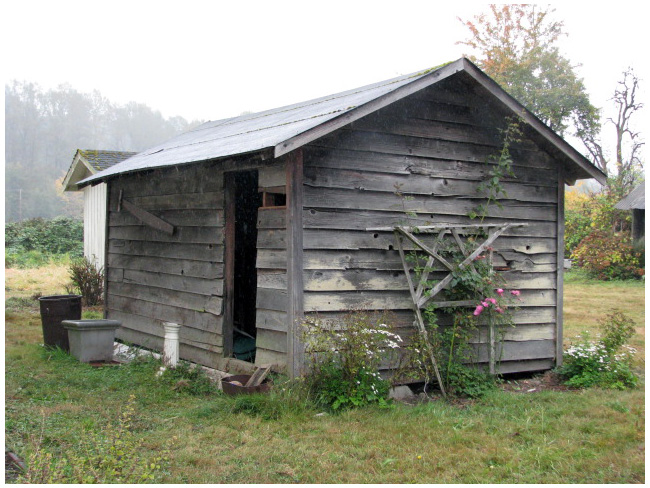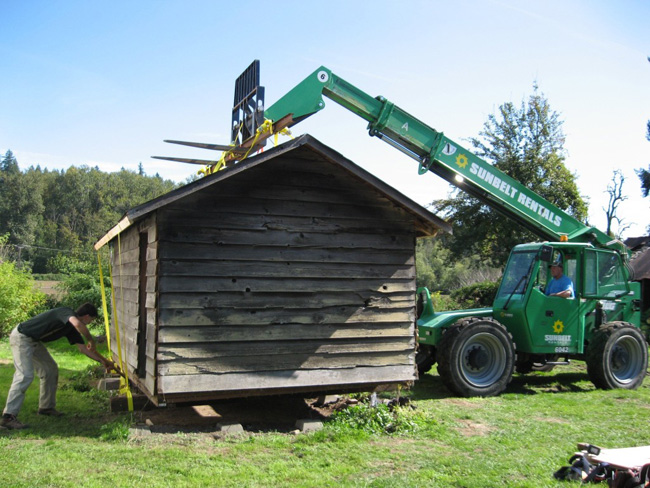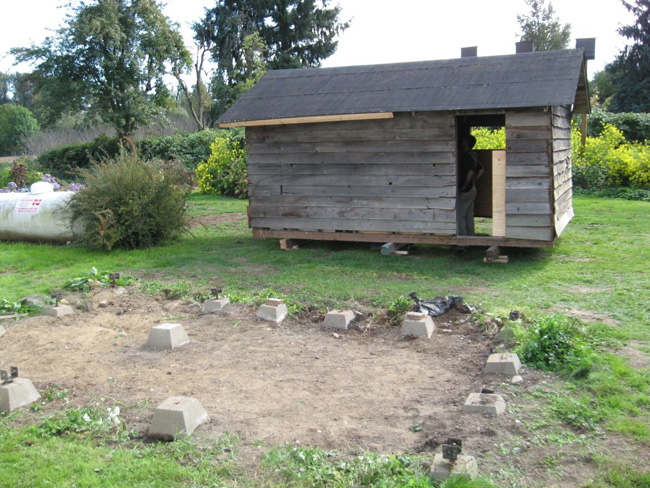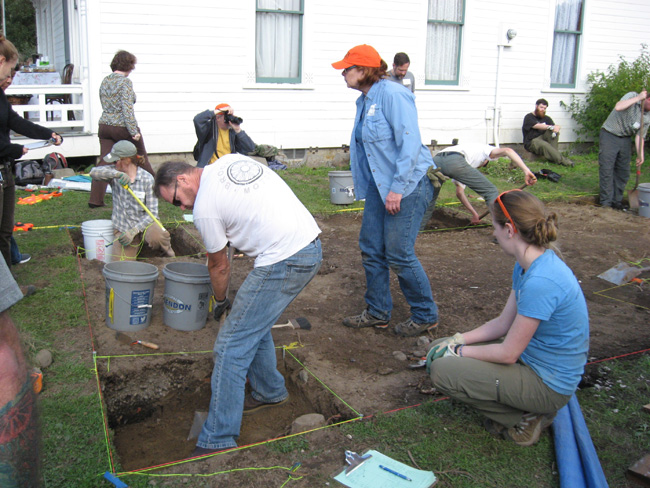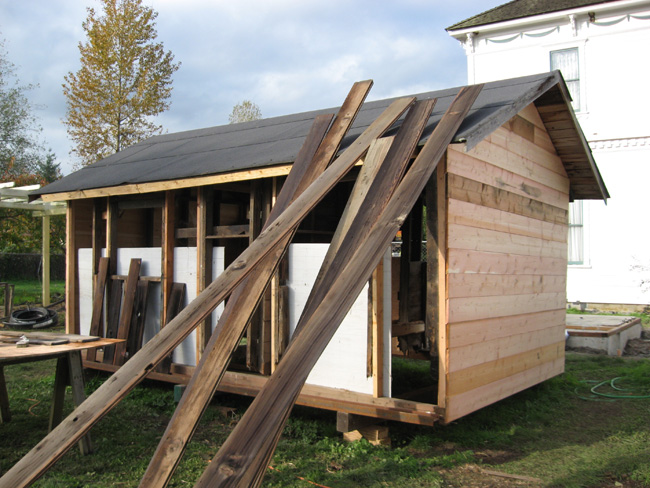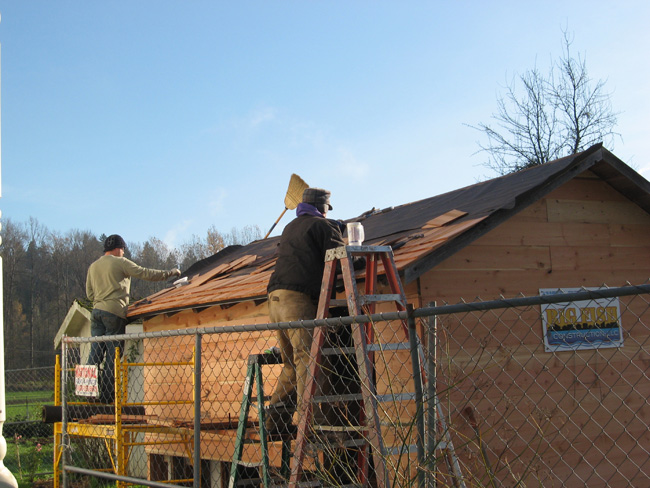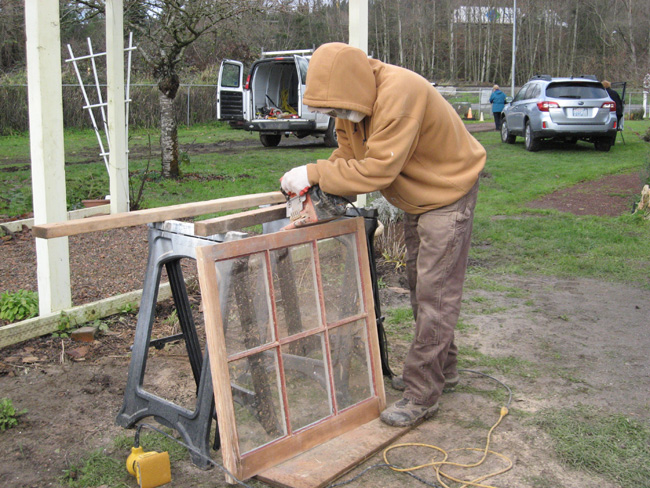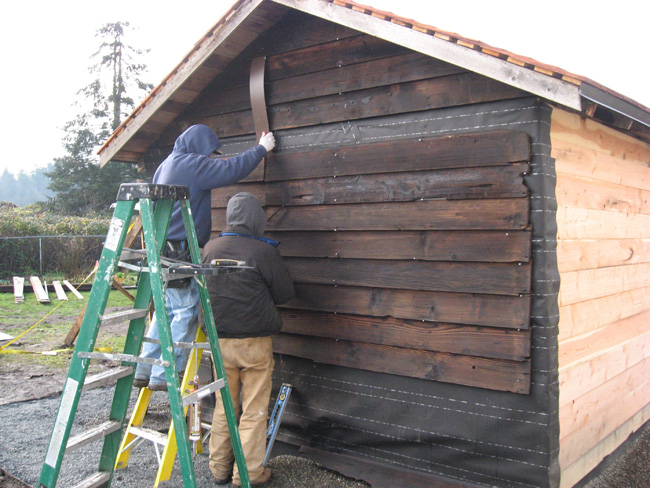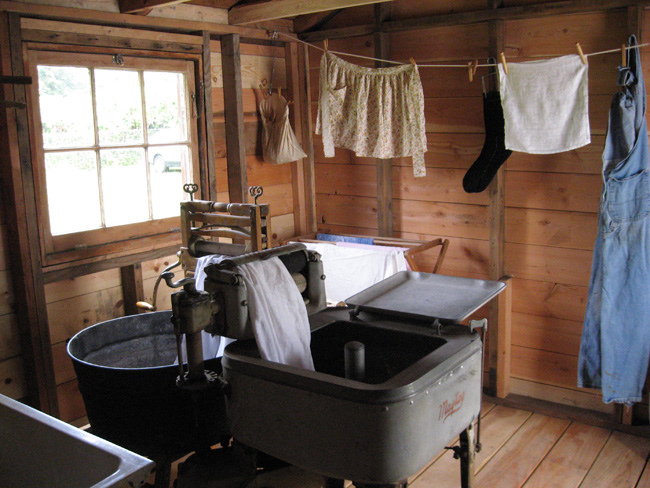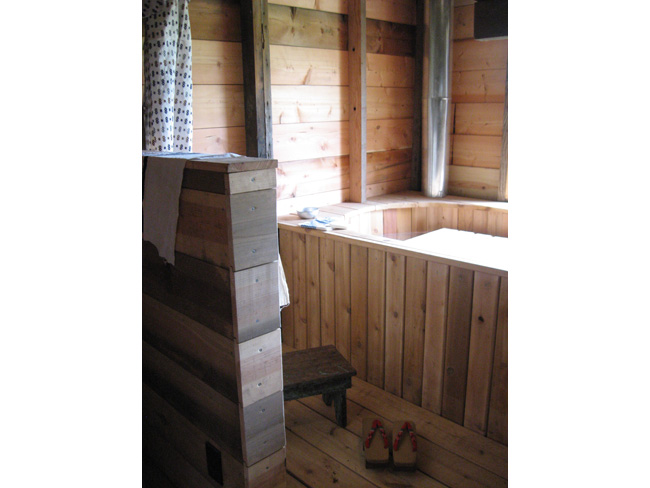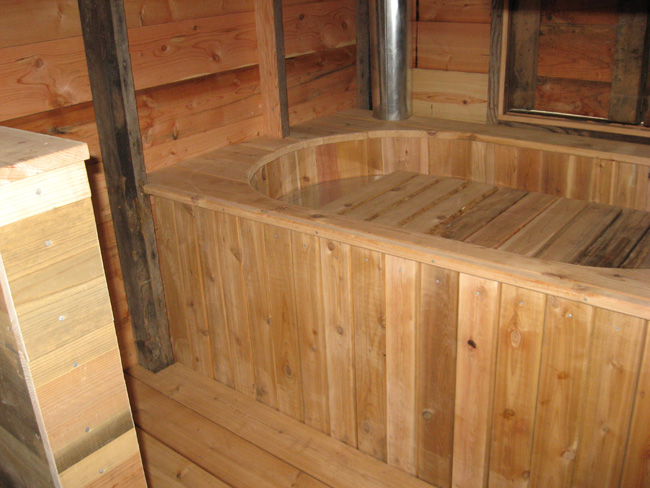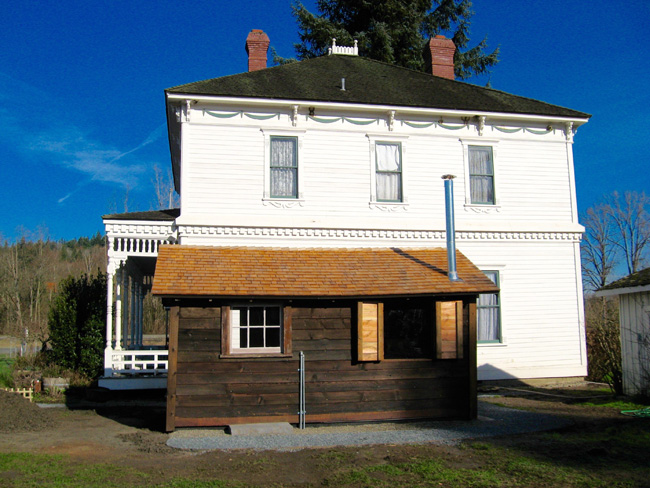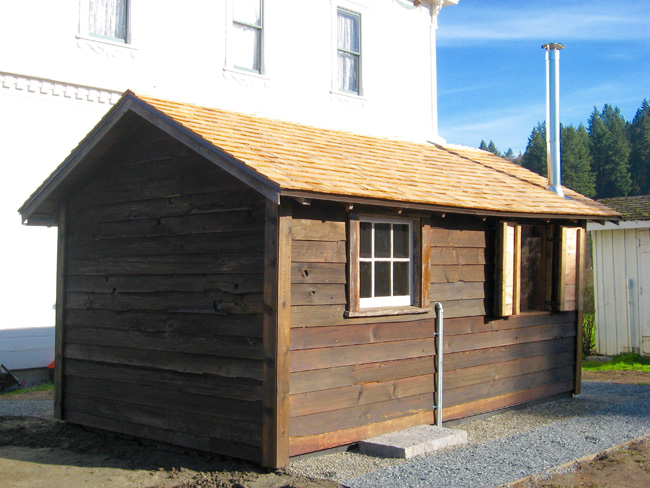The Hori Furoba (Bathhouse)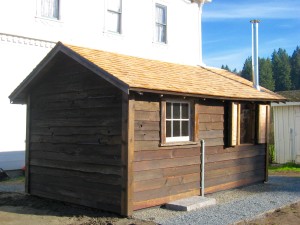
In 1929 Shigeichi and Shimano Hori leased the Neely property and lived in the mansion with their four sons and one daughter. Shigeichi ran a small dairy, and produce farm, but also worked at the F. H. Hogue packing shed in Kent. Shimano’s brother, Jitsuo Otoshi, and his wife lived in a small house on the property and helped with the farm operations.
One traditional aspect of Japanese life on the farm was the furoba, or bathhouse. Most families in the valley had constructed such a small building for use after a hard day of labor. The Hori bathhouse, constructed in 1930, is a one-story wood frame structure that measures 10′ by 16′. The interior is divided into two rooms. Frank Hori (son) remembers that an entrance and window were in the first room and a swinging door lead to the back room with the tub.
According to Mary Hori Nakamura (daughter), “We would wash ourselves outside the tub and rinse ourselves off in the front room, and then go into the back room and get in the tub to soak. The whole family took baths every night.” The bath was used to relax and socialize.
The Hori Bathhouse still stands behind the Neely Mansion. It has been named a King County Landmark, as it is the only such structure existing in the county today. Due to years of weathering and use as a shed, it was in disrepair. The Neely Mansion Association received grant funds from 4Culture and King County for the restoration of this historic building. The bathhouse was temporarily moved from its site in preparation for a new foundation. SWCA Environmental took the opportunity to hold an archaeological dig. Big Fish Construction then began the restoration. The project was completed in June of 2016. A dedication and celebration ceremony was held for the general public on June 25th. The newly restored interior exhibit shows what the rooms were like in 1930, including a soaking tub (furo).
Take a look at the Final Schematic Design drawings for the Hori Furoba from BOLA Architecture of Seattle. Bath House FSD 07.21.14

